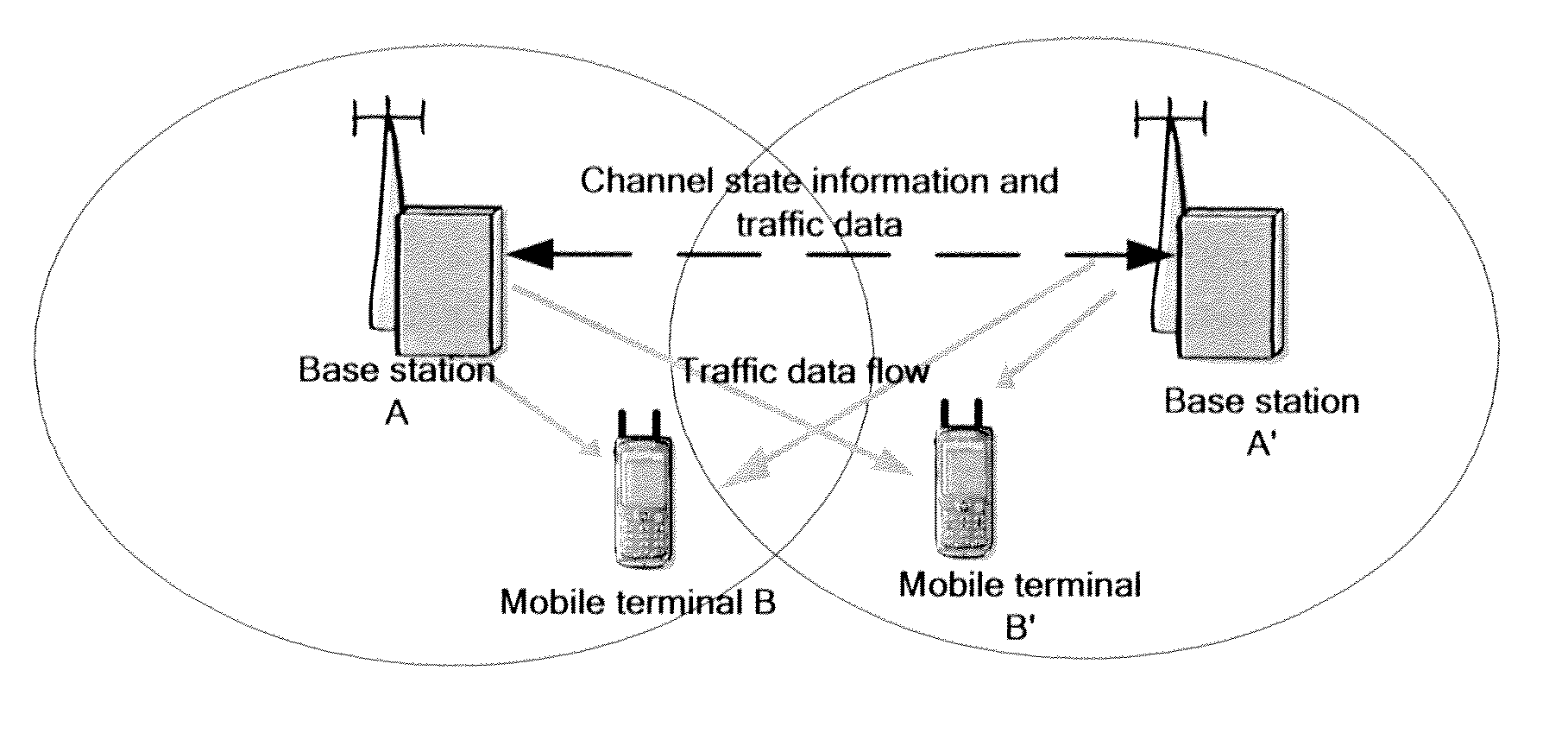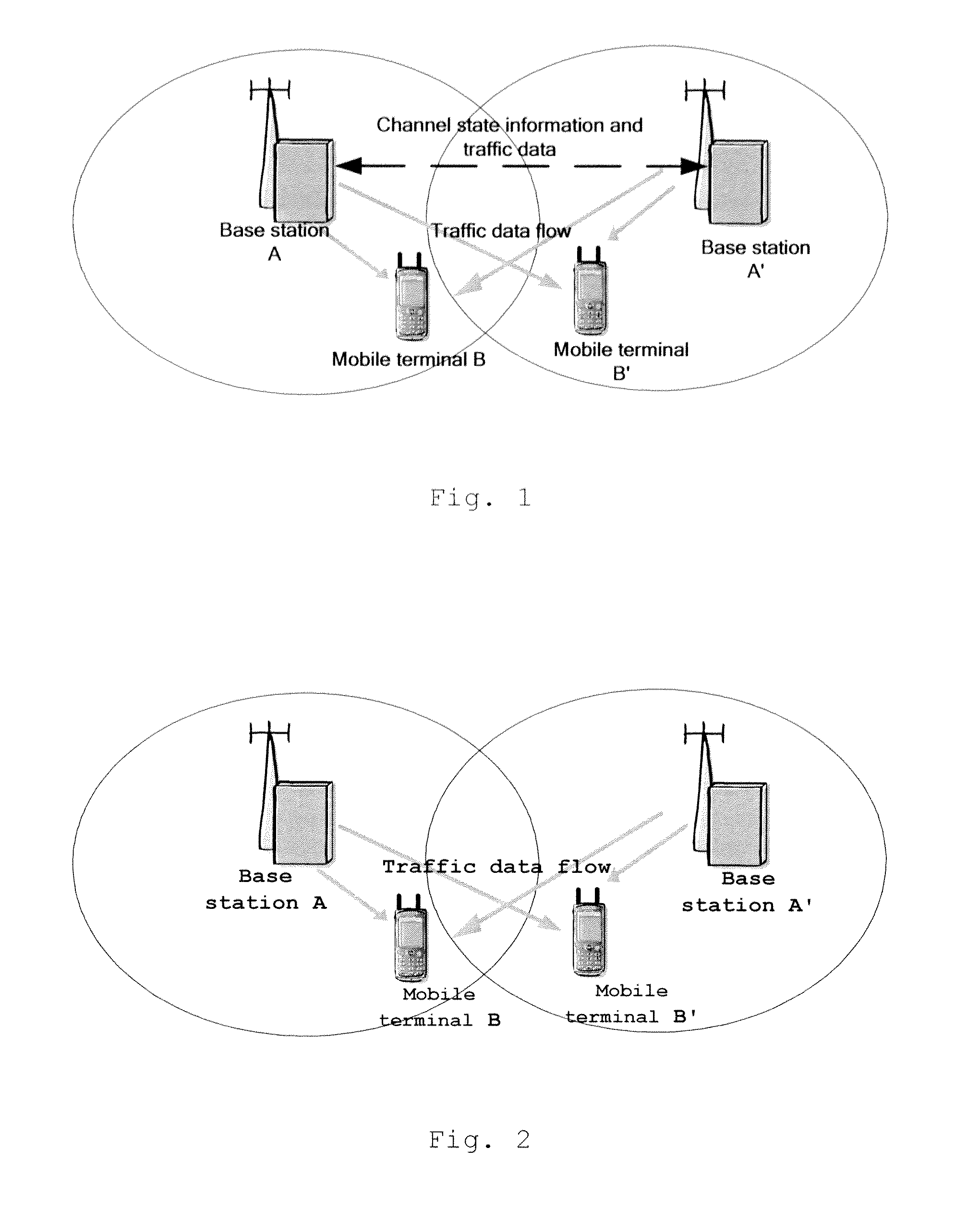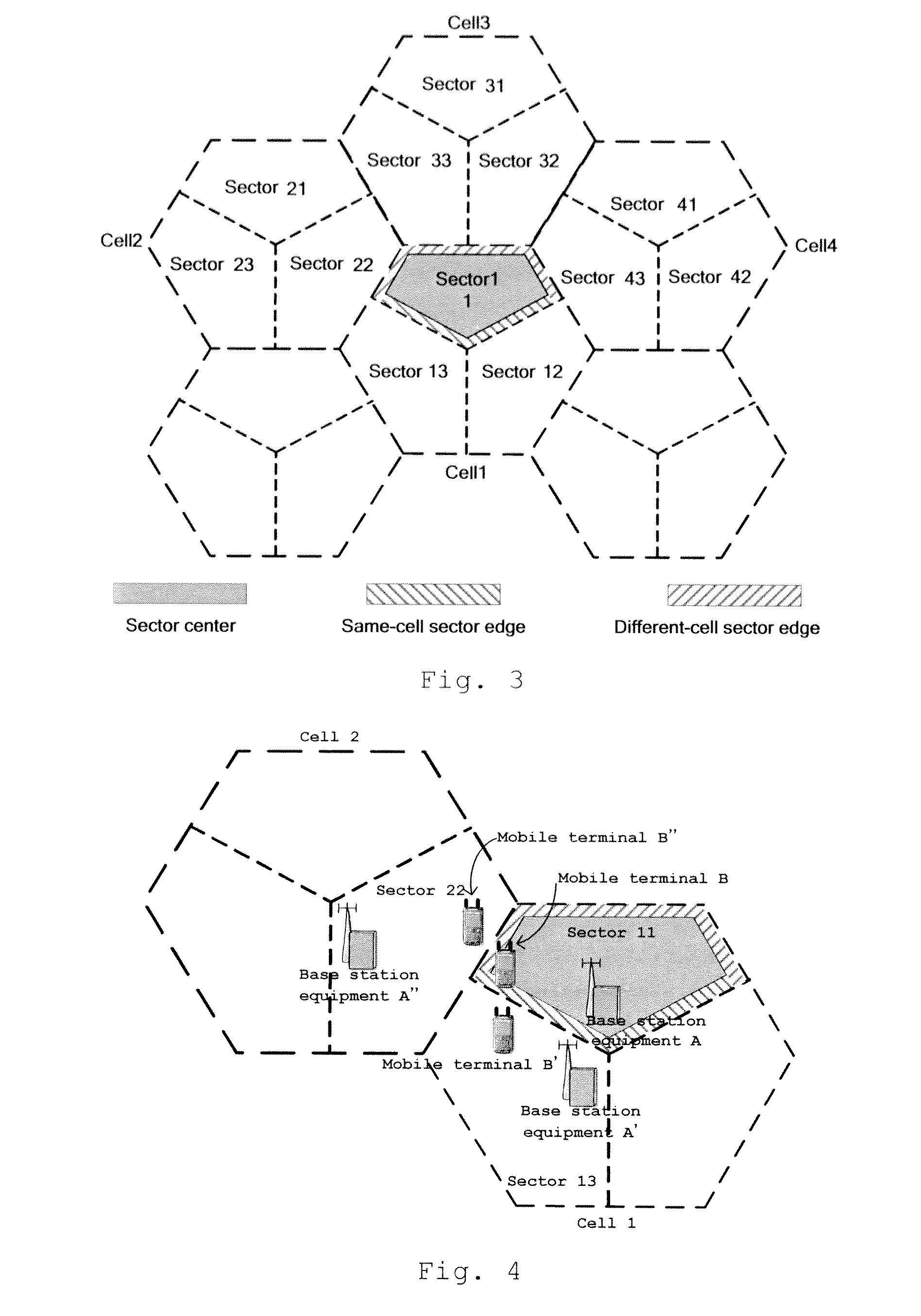Switching technology for cooperation types in multi-sector cooperative communication
a technology of multi-sector cooperation and switching technology, applied in the field of wireless communication technology, can solve the problems of high requirements for receiver complexity, difficult to increase system performance, and high cost of system spectrum efficiency, and achieve the effect of reducing the latency of cooperative communication between the cells, improving the attraction and competitiveness of multi-cell mimo, and increasing throughput and system performance for users at sector edg
- Summary
- Abstract
- Description
- Claims
- Application Information
AI Technical Summary
Benefits of technology
Problems solved by technology
Method used
Image
Examples
Embodiment Construction
[0045]The following part will elucidate the embodiment of the invention from the view point of method, by referring to FIG. 3 to FIG. 6.
[0046]As shown in FIG. 3, according to the interference, from neighboring sectors, affecting the mobile terminal in a sector, the coverage area of a sector in a cellular system can be divided into three parts: sector center, same-cell sector edge and different-cell sector edge. Generally speaking, due to the fading of the radio signal, the radio channel at the sector center would not be affected by the signal from neighboring sectors; while the radio channels at the same-cell sector edge or the different-cell sector edge might be interfered by the signal from the neighboring sectors. However, the inter-sector interference affected at the same-cell sector edge is different from that at the different-cell sector edge: the inter-sector interference affected at the same-cell sector edge is coming from a neighboring sector in the same cell, while the int...
PUM
 Login to View More
Login to View More Abstract
Description
Claims
Application Information
 Login to View More
Login to View More - R&D
- Intellectual Property
- Life Sciences
- Materials
- Tech Scout
- Unparalleled Data Quality
- Higher Quality Content
- 60% Fewer Hallucinations
Browse by: Latest US Patents, China's latest patents, Technical Efficacy Thesaurus, Application Domain, Technology Topic, Popular Technical Reports.
© 2025 PatSnap. All rights reserved.Legal|Privacy policy|Modern Slavery Act Transparency Statement|Sitemap|About US| Contact US: help@patsnap.com



